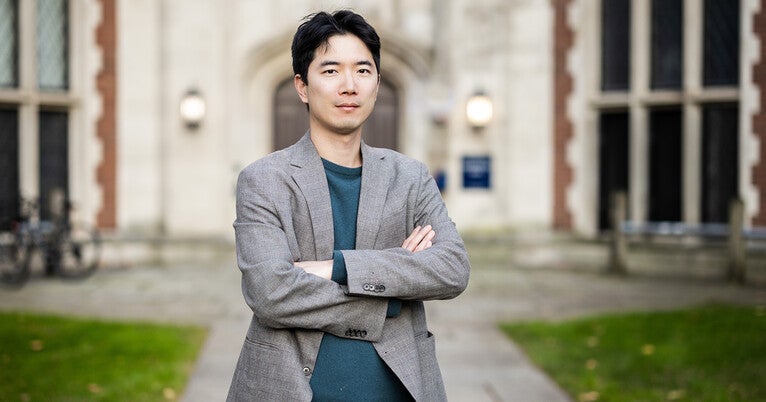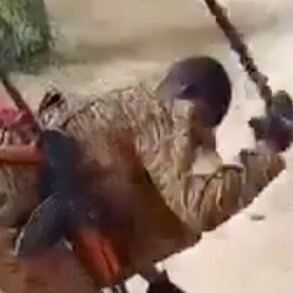
Yale sociologist Yuan Hsiao studies how social networks shape people’s lives.
His work examines the fundamental processes behind human interconnections, the structures of those connections, and the social phenomena that emerge from them. Examples include how social media influences protest movements and other kinds of political participation; how personal relationships affect the spread of religion; and how community networks influence health-related behavior.
In his research, he utilizes a variety of computational and conventional data and methods, including “big” digital data, administrative records, survey experiments, or agent-based simulations.
Hsiao joined Yale this fall as an assistant professor in the Department of Sociology in the Faculty of Arts and Sciences.
In the latest edition of Office Hours, a Q&A series that introduces new Yale faculty members to the broader community, he discusses his multi-data approach to answering big social science questions, how his involvement in street protests inspired his research, and a paradox he’s discovered concerning how social media affects protest movements.
What sparked your interest in social networks?
Yuan Hsiao: I initially became interested in studying how social media networks cause people to participate in protests and other social movements. I’m from Taiwan. In 2008, I became an activist protesting in support of the freedom of speech and assembly. It was Taiwan’s first internet-based social movement, which was quite different from the way that protests had been organized historically.
By organizing on the internet — rather than the conventional approaches organizations used to mobilize people during, say, the civil rights movement in the United States — we were making all sorts of new connections through social media. People who didn’t know each other and had never met were able to coordinate and organize large protests.
From there, I began to understand that these sorts of connections shape not just people’s political participation, but their involvement in other online and offline behaviors as well.
What’s an example of a study you’ve published?
Hsiao: In one study, I looked at whether network structures on social media enable or inhibit protest participation. Some people argue that using social media increases people’s political engagement, such as participating in street protests, attending public meetings, or voting. On the other hand, others say that connections through social media make people feel good while they’re online but doesn’t translate into real-world political action. This is called “slacktivism.”
People frequently mention networks that exist through social media, but they rarely map out what those network structures look like. This is what I attempted to do. I collected digital data from Twitter, now X, and mapped out the network structure of social media relationships surrounding a specific protest organization, and then compared that network structure to network structures we see in other cases. I found that the structure of digital networks enables people to participate in high-cost political behavior — that is, behavior that requires more effort, such as strikes or street rallies — but it limits the spread of low-cost behaviors, like spreading political memes or signing online petitions. It’s a bit of a paradox. Social media helps to spread behaviors that require a lot of effort, but it limits other behaviors that should be easier to spread.
You take a multi-method, multi-data approach to your research. What does that involve?
Hsiao: I believe that the big questions in the social sciences require more than one type of data to answer. Conventionally, a lot of social science research is based only on surveys, or interviews, or experiments and so forth. The current trend is to figure out how to combine different sources of data and different methods of analysis to answer big social questions. For example, how do online and offline networks change conflict relationships between people? In my recently published article, my coauthors and I combined quantitative and qualitative analyses to see how the social media networks of Latino street gangs in Chicago interact with their offline networks. We obtained data from police records and social media data and applied qualitative and quantitative analyses to them to try to make sense of this complex interaction between the gangs’ online and offline networks.
What are you currently working on?
Hsiao: Right now, I’m studying how social media networks promote the spread of emotions and emotional content, which in turn influences political participation. The idea here is that people conventionally talk about behavior disseminating through social networks as something that is difficult and moves slowly. Think about attending a protest. Often, it’ll take more than one person to persuade you to go; multiple sources of social reinforcement are critical for spreading significant political action. However, we observe widespread emotional content on social media that travels quickly through resharing content. The puzzle then becomes what happens when political emotions, which spread quickly, interact with political behavior that spreads slowly. My research aims to unravel this interaction, combining network analysis with computational modeling to understand how emotions and behaviors spread at different rates within digital networks. I anticipate this research will help us understand how digital networks are fundamentally shifting how political behavior is diffusing nowadays.
What do you like to do in your spare time?
Hsiao: Playing with statistical models and simulations is fun to me, so I do a bit of that in my spare time. I also like hiking, preferably easy hikes, with my family. Exploring different playgrounds with fun activities has become a late hobby for me. Finally, I have a glass of wine from time to time and enjoy going to wine tastings, too.
This post was originally published on this site be sure to check out more of their content







